| author | Hyo Jae Yoon |
|---|---|
| journal | Accounts of Chemical Research |
| Homepage | https://hyojaeyoon.wixsite.com/omml |
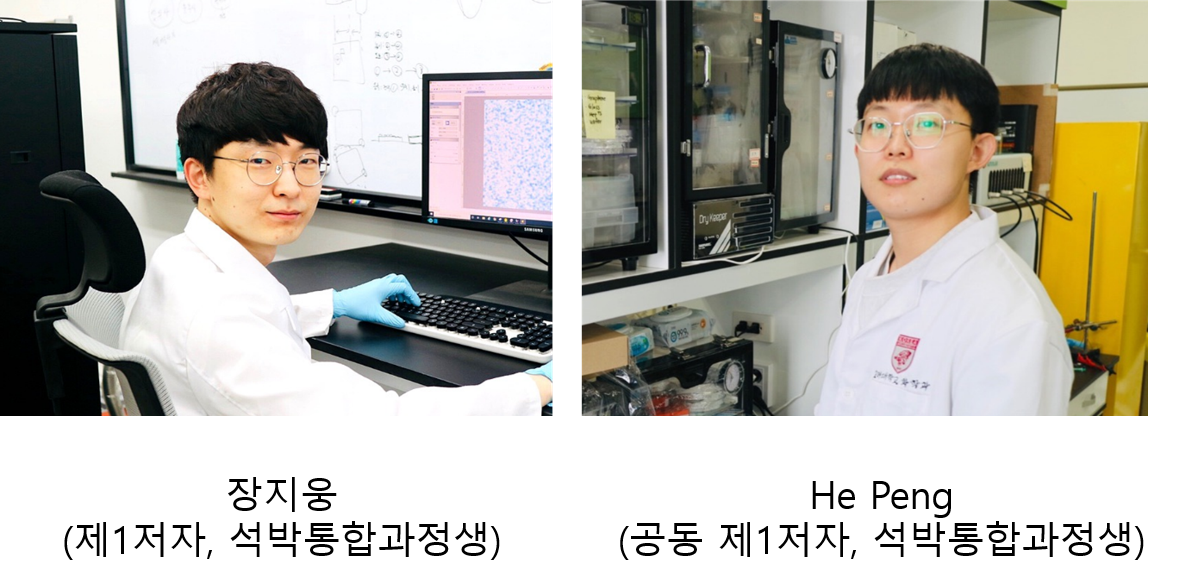
Understanding the thermoelectric effects that convert energy between heat and electricity on a molecular scale is of great interest to the nanoscience community. As electronic devices continue to be miniaturized to nanometer scales, thermoregulation on such devices becomes increasingly critical. In addition, the study of molecular thermoelectricity provides information that cannot be accessed through conventional electrical conductance measurements. The field of molecular thermoelectrics aims to explore thermoelectric effects in electrode-molecule-electrode tunnel junctions and draw inferences on how the (supra)molecular structure of active molecules is associated with their thermopower. In this Account, we introduce a convenient and useful junction technique that enables thermovoltage measurements of one molecule thick films, self-assembled monolayers (SAMs), with reliability, and discuss the atomic-detailed structure-thermopower relations established by the technique. The technique relies on a microelectrode composed of non-Newtonian liquid metal, eutectic gallium–indium (EGaIn) covered with a native gallium oxide layer. The EGaIn electrode makes it possible to form thermoelectric contacts with the delicate structure of SAMs in a noninvasive fashion. A defined interface between SAM and the EGaIn electrode allows time-effective collection of large amounts of thermovoltage data, with great reproducibility, efficiency, and reliable interpretation and statistical analysis of the data. We also highlight recent efforts to utilize the EGaIn technique for probing molecular thermoelectricity and structure-thermopower relations. Using the technique, it was possible to unravel quantum-chemical mechanisms of thermoelectric functions, based on the Mott formula, in SAM-based large-area junctions, which in turn led us to set various hypotheses to boost the Seebeck coefficient. By validating the hypotheses again with the EGaIn technique, we revealed that the thermopower of junction increases through the reduction of the energy offset between accessible molecular orbital energy level and Fermi level or the tuning of broadening of the orbital energy level. Such alterations in the shape of energy topography of junction could be achieved through structural modifications in anchoring group and molecular backbone of SAM, and the bottom electrode. Molecular thermoelectrics offers a unique opportunity to build a well-defined nanoscale system and isolate an effect of interest from others, advancing fundamental understanding of charge transport across individual molecules and molecule-electrode interfaces. In the Account, we showed our recent work involving carefully designed molecular system that are relevant to answering the question of how thermopower differs between the tunneling and thermal-hopping regimes. The field of molecular thermoelectrics needs to address practical application-related issues, particularly molecular degradation in thermal environments. In this regard, we summarized the results highlighting the thermal instability of SAM-based junctions based on a traditional thiol anchor group and how to circumvent this problem. We also discussed the power factor (PF)─a practical parameter representing the efficiency for converting heat into electricity─of SAMs, evaluated using the EGaIn technique. In the Conclusion section of this Account, we present future challenges and perspectives.
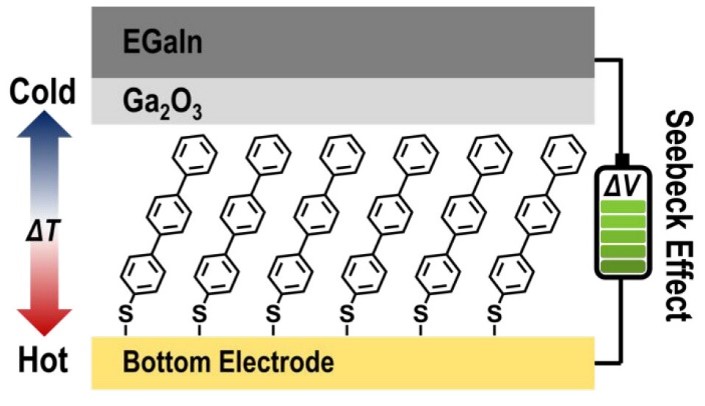
https://pubs.acs.org/doi/full/10.1021/acs.accounts.3c00168
-
Read More

Seebeck Effect in Molecular Wires Facilitating Long-Range Transport
The study of molecular wires facilitating long-range charge transport is of fundamental interest for the development of various technologies in (bio)organic and molecular electronics. Defining the nature of long-range charge transport is ch... -
Read More
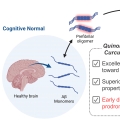
Early onset diagnosis in Alzheimer’s disease patients via amyloid-β oligomers-sensing probe in cerebrospinal fluid
Amyloid-β (Aβ) oligomers are implicated in the onset of Alzheimer’s disease (AD). Herein, quinoline-derived half-curcumin-dioxaborine (Q-OB) fluorescent probe was designed for detecting Aβ oligomers by finely tailoring ... -
Read More
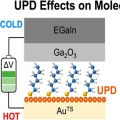
Thermopower in Underpotential Deposition-Based Molecular Junctions
Underpotential deposition (UPD) is an intriguing means for tailoring the interfacial electronic structure of an adsorbate at a substrate. Here we investigate the impact of UPD on thermoelectricity occurring in molecular tunnel junctions bas... -
Read More
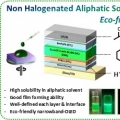
Eco-friendly solution-processed narrowband OLEDs using non-halogenated aliphatic solvent systems
In general, fabricating multilayer structures in solution-processed organic light-emitting diodes (OLEDs) presents challenges owing to the potential degradation of the initial film during subsequent processing steps. Furthermore, these devi... -
Read More
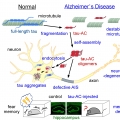
Self-Aggregating Tau Fragments Recapitulate Pathologic Phenotypes and Neurotoxicity of Alzheimer's Disease in Mice
In tauopathy conditions, such as Alzheimer's disease (AD), highly soluble and natively unfolded tau polymerizes into an insoluble filament; however, the mechanistic details of this process remain unclear. In the brains of AD patients, o... -
Read More
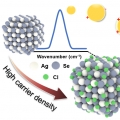
Ultranarrow Mid-infrared Quantum Plasmon Resonance of Self-doped Silver Selenide Nanocrystal
The infrared quantum plasmon resonance (IR QPR) of nanocrystals (NCs) exhibits the combined properties of classical and quantum mechanics, potentially enabling unprecedented optics. However, research on the development of localized surface ... -
Read More
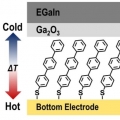
Molecular Thermoelectricity in EGaIn-Based Molecular Junctions
Understanding the thermoelectric effects that convert energy between heat and electricity on a molecular scale is of great interest to the nanoscience community. As electronic devices continue to be miniaturized to nanometer scales, thermor... -
Read More
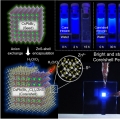
Perovskite Nanocrystals Protected by Hermetically Sealing for Highly Bright and Stable Deep-Blue Light-Emitting Diodes
Metal–halide perovskite nanocrystals (NCs) have emerged as suitablelight-emitting materials for light-emitting diodes (LEDs) and other practicalapplications. However, LEDs with perovskite NCs undergoenvironment-induced and ion-migratio... -
Read More
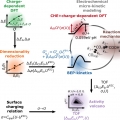
The importance of a charge transfer descriptor for screening potential CO2 reduction electrocatalysts
It has been over twenty years since the linear scaling of reaction intermediate adsorption energies started to coin the fields of heterogeneous and electrocatalysis as a blessing and a curse at the same time. It has established the possibili... -
Read More
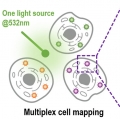
Resonant Raman-Active Polymer Dot Barcodes for Multiplex Cell Mapping
Resonance Raman spectroscopy is an efficient tool for multiplex imaging because of the narrow bandwidth of the electronically enhanced vibrational signals. However, Raman signals are often overwhelmed by concurrent fluorescence. In this stud... -
Read More

Decoding the Roles of Amyloid-β (1-42)'s Key Oligomerization Domains toward Designing Epitope-Specific Aggregation Inhibitors
Fibrillar amyloid aggregates are the pathological hallmarks of multiple neurodegenerative diseases. The amyloid-β (1-42) protein, in particular, is a major component of senile plaques in the brains of patients with Alzheimer’s di... -
Read More
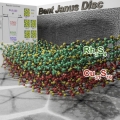
Flattening bent Janus nanodiscs expands lattice parameters
Nanoscale lattice parameter engineering is a potentially powerful tool for tailoring the electronic properties of nanomaterials. The nascent strain in juxtaposed hetero-interfaces of nanocrystals was recently shown to substantially affect t... -
Read More
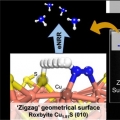
Directing the surface atomic geometry on copper sulfide for enhanced electrochemical nitrogen reduction
Understanding catalytic-conversion determinants will blueprint an efficient electrocatalyst design for electrochemical nitrogen reduction. In metal chalcogenide-based catalysts, metal-site nitrogen adsorption initiates nitrogen fixation, an... -
Read More
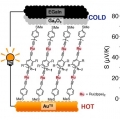
High Seebeck Coefficient Achieved by Multinuclear Organometallic Molecular Junctions
This paper describes thermoelectric property of molecular junctions incorporating multinuclear ruthenium alkynyl complexes that comprise Ru(dppe)2 (dppe = 1,2-bis(diphenylphosphino)ethane) fragments and diethylnyl aromatic bridging ligands ... -
Read More
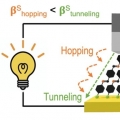
Thermopower in Transition from Tunneling to Hopping
The Seebeck effect of molecular junction in a hopping regime or tunneling-to-hopping transition remains uncertain. This paper describes the Seebeck effect in molecular epitaxy films (OPIn where n = 1 – 9) based on imine condensation b... -
Read More
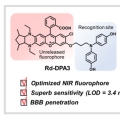
An Activity-Based Fluorescent Probe for Imaging Fluctuations of Peroxynitrite (ONOO-) in the Alzheimer's Disease Brain
Peroxynitrite (ONOO-) plays a critical role in Alzheimer's disease (AD), and the association between ONOO- and AD is inexplicit. To reveal the ONOO- influxes in AD brains, an activatable activity-based fluorescence probe Rd-DPA3 was rat... -
Read More

Deep learning for development of organic optoelectronic devices: Efficient prescreening of hosts and emitters in deep-blue fluorescent OLEDs
The highest occupied molecular orbital (HOMO) and lowest unoccupied molecular orbital (LUMO) energies, which are key factors in optoelectronic devices, must be accurately estimated for newly designed materials. Here, we developed a deep lea... -
Read More
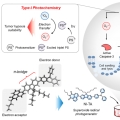
Photocatalytic Superoxide Radical Generator that Induces Pyroptosis in Cancer Cells
In this study, we show that a photocatalytic superoxide radical (O2−•) generator, NI-TA, triggers pyroptosis in cancer cells. NI-TA was designed to take advantage of an intramolecular triplet-ground state splitting energy modulat... -
Read More
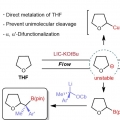
Direct C–H metallation of tetrahydrofuran and application in flow
The direct C–H metallation of tetrahydrofuran (THF) to generate α-anionic THF is one of the most straightforward methods for the the generation and utilization of α-anionic THF. Here we develop a reaction for the direct me... -
Read More
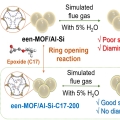
Functionalization of Diamine-Appended MOF-Based Adsorbents by Ring Opening of Epoxide: Long-Term Stability and CO2 Recyclability under Humid Conditions
Although diamine-appended metal-organic framework (MOF) adsorbents exhibit excellent CO2 adsorption performance, a continuous decrease in long-term capacity during repeated wet cycles remains a formidable challenge for practical application...


 Ultranarrow Mid-infrared Quantum Plasmon Resonance of Self-do...
Ultranarrow Mid-infrared Quantum Plasmon Resonance of Self-do...
 Perovskite Nanocrystals Protected by Hermetically Sealing for...
Perovskite Nanocrystals Protected by Hermetically Sealing for...